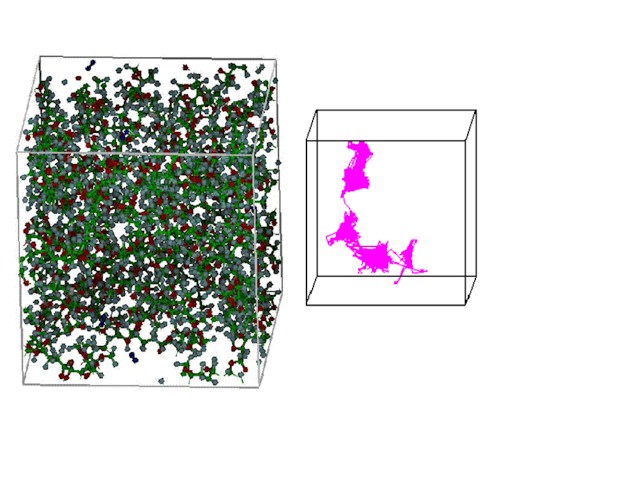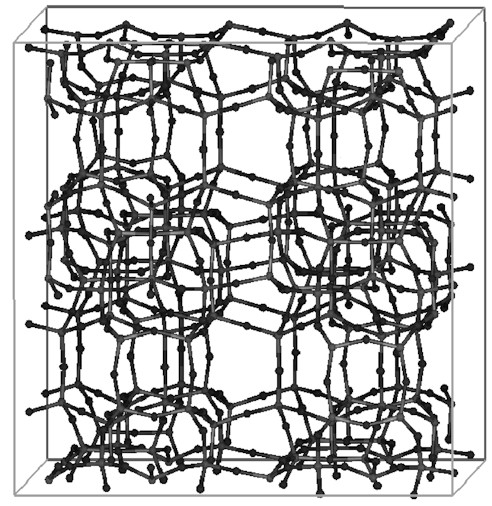Atomistic and non atomistic simulations have become in the last years more reliable; for this reason, computational chemistry can give to investigations an important and above all effective contribution.
Atomistic and non atomistic simulations can give a large number of information in relatively short times, particularly :
a) Evaluation of different materials and process properties
b) Interpretation of ambiguous experimental results
c) Materials design and process.
On these considerations, in the laboratories of the Institute for Membrane Technology (ITM-CNR) there are some researches that use several computational techniques to pursue the above objectives; in particular, development or improvement of new polymeric materials used in the membrane with particular properties [figure 1], atomistic and non atomistic simulations of the transport process in the zeolitic membrane and moreover modelling of the membrane emulsification.
Various technologically important separation processes use tailor made membrane with specific perm-selective capabilities. Synthesis of new membranes is a laborious and energy consuming procedure, that includes screaning activities to identify the target materials at molecular level.
In addition, the new experimental techniques do not permit a clear identification of atomic structure of amorphous materials.
The continuous progress in supercomputing workstations and new graphic instruments made the theoretical methodologies a powerful analytical tool to overcome the structural information. Molecular modeling of amorfous polymeric materials has been useful for the description of the complex morphology of polymeric materials and for the transport mechanism of permeant molecules with an accuracy comparable to the experimental data.
The zeolitic membranes in some fields point out several advantages respect to polymeric ones, that is thermal resistance and chemical-physical stability. In the Institute for Membrane Technology (ITM-CNR) some simulations have been done to reproduce zeolitic membrane permeability.
The atomistic simulations give the fundamental parameter that characterize the diffusion in zeolitic materials (diffusion coefficients, adsorption isotherms), the non atomistic calculations, instead, use these parameters to obtain fluxes and permeability of the membranes. This procedure (two levels) permits to connect the atomic structural proprieties of the materials with their transport ones. Simulations on Silicalite-1 and ZSM5 [figure 2] have been done, moreover several unused zeolitic in the membrane preparation are also simulated. The gas systems studied are inorganic, organic and noble gas, in particular: H2, N2, O2, CO2, SF6, CF4, CH4, i-C4H10, He, Ne, Ar, Xe.
Immagini:


